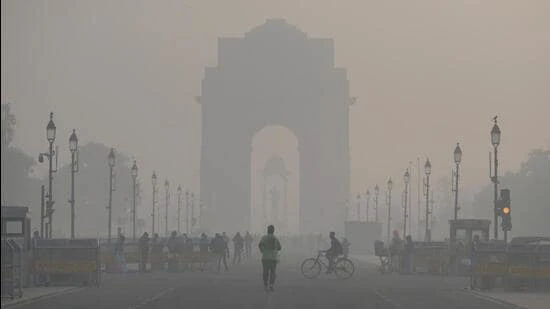Delhi residents are losing 8.2 years of their life expectancy to high PM 2.5 concentration in the city, a new report released on Thursday said, underlining that this loss could be mitigated by bringing down pollution levels to the World Health Organization (WHO) standard of 5 micrograms per cubic metre (µg/m3).
The loss is 4.7 years as per the national standard of 40µg/m3, it said. The average Indian is losing 3.5 years of their life expectancy, said the Air Quality Life Index (AQLI).
The Energy Policy Institute at the University of Chicago (EPIC)’s 2025 report is based on an analysis of pollution data from 2023. Delhi’s annual PM 2.5 concentration in 2023 was 88.4µg/m3. It was 41µg/m3 for the entire country.
The report cited the latest satellite-derived PM2.5 estimates in 2023 and said particulate concentrations in India were higher than in 2022. “These levels are more than 8 times higher than the WHO guideline, and reducing them to permanently meet the WHO Guideline would add 3.5 years to the average life expectancy of Indians,” said the report. It added that people of Delhi were the worst impacted across the country.
The average person globally was losing 1.9 years of their life, according to the WHO standard. “The AQLI’s 2023 data reveals that global PM2.5 concentrations in 2023 were 1.5% higher than in 2022 and nearly 5 times the WHO guideline of 5 μg/m3.”
The AQLI is a pollution index that quantifies the causal relationship between long-term human exposure to air pollution and life expectancy. The life expectancy calculations made by AQLI are based on a pair of peer-reviewed studies. By comparing two subgroups of the population that experienced prolonged exposure to different levels of particulate air pollution, the studies plausibly isolate the effect of particulate air pollution from other factors that affect health.
The biggest loss in life expectancy as per the WHO standard after Delhi was in Bihar (5.4 years), Haryana (5.3 years), and Uttar Pradesh (5 years), the report said. The report said the northern plains, with 544.4 million residents or 38.9% of the country’s population, could gain an average of five years of their life in relation to WHO standards and 1.6 years in relation to the national standard.
Overall, the country’s entire population of 1.4 billion lives in areas where the particulate matter pollution levels exceeded the WHO standards. “This means that even people living in the cleanest regions of India could live 9.4 months longer if particulate concentrations in these regions were reduced to meet the WHO guideline,” the report said.
It added that 46% of the population lived in areas where the pollution levels also exceeded the annual national standard of 40 µg/m³.
“Reducing particulate concentrations in these regions to meet India’s national standard could add 1.5 years to the life expectancy of people living in these regions,” it said.
Air Quality Life Index director Tanushree Ganguly, who co-authored the report, said the data and findings were particularly stark for Delhi. “Consistent exposure to the levels seen in Delhi over the past five years suggests that residents could lose up to eight years of life if such conditions persist. Pollution reduction in Delhi must therefore be guided by strict concentration reduction targets. To meet India’s national standard of 40 µg/m³, the city would need to cut particulate concentrations by more than 50%.”
She said doing so could add over 4.5 years to the life expectancy of the average resident. “Research shows that about 50% of Delhi’s pollution comes from local sources and controlling these sources alone could therefore help meet national standards,” she said.
Last year’s AQLI report said people in Delhi lost close to 7.8 years of their lives in comparison to the 2022 annual PM 2.5 reading of 84.3µg/m3. Uttar Pradesh was the worst-impacted after Delhi, with residents losing 5.9 years as per the 2024 report, followed by Haryana (5.2 years).
